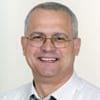Explore all the information on
Amino acids in poultry nutrition
Adequate provision of dietary amino acids is required to maintain normal immunocompetence and protection of the host from some diseases in all species (Beski et al. 2015). Therefore, the development of immune function in poultry will be promoted if they receive sufficient amino acids in their diets. The essential amino acids for poultry are arginine, glycine, histidine, leucine, isoleucine, lysine, methionine, cystine, phenylalanine, threonine, tryptophan, and valine. Out of these, the ones critical in practical diets are arginine, lysine, methionine, cystine and tryptophan.
1. Introduction Feed materials, such as wheat and maize, are known to be major variables when formulating poultry diets, as their nutrient profile and quality are often inconsistent and deviate from default values used by feed formulation software [1]. Additionally, the feed industry has access to a wide range of feedstuffs and the use of a particular ingredient will often depend on its cost, since least cost formulation algorithms are the industry standard [2]. Whilst...
Comments : 0
Recommendations: 3
As global animal production has rapidly shifted towards reduced Antibiotic free, “Gut health” has become a popular expression and all-encompassing concept in the scientific community. The gastro-intestinal tract must provide a barrier function protecting against harmful environmental elements (e.g. toxins and pathogenic microbes), while simultaneously permitting appropriate nutrient absorption. Successful animal performance depends on the interplay between the intestine,...
Comments : 41
Recommendations: 15
.jpg&w=3840&q=75)

Jonathan Cade comments on his new role as Chairman of the U.S. Poultry & Egg Association
Suggested link
Protein quality of the soybean meal is the result of amino acid present in the meal and the portion in the bioavailable form to the animals. While intending to utilize the same for monogastric animals, it has to be properly heat processed so as to minimize the anti nutritional effect and thereby increasing the digestibility of amino acids present in the meal. At the same time as known to everyone, it should not be over processed which will decrease the concentration and digestibility of...
Comments : 2
Recommendations: 6
1. Introduction Coccidiosis, caused by the protozoan parasite of the genus Eimeria, remains a significant threat to poultry health worldwide, leading to substantial economic losses [1]. The infection of coccidia presents multifaceted challenges to broiler health and productivity. Numerous studies have highlighted its detrimental effects on nutrient utilization, intestinal integrity, and the growth performance of birds [2–5]. On the other hand, previous research has also...
Comments : 0
Recommendations: 0
Introduction Recently, higher dietary arginine (Arg) levels than the recommended values in nutritional tables have been reported (Murakami et al. 2012; Xu et al., 2018; Zampiga et al.,2018; Oliveira et al., 2022). This suggests that Arg levels needed for maximum performance are increased in modern broilers. The high dietary Arg levels found in the literature may be associated with the critical roles played by Arg in animal metabolism. Besides enhancing protein synthesis via...
Comments : 0
Recommendations: 5
Discover the power of butyric acid, a naturally occurring short-chain fatty acid found in animals. Used as a feed ingredient in poultry, swine, and calf production, butyric acid supports gut health and the immune system. Improve your animal's digestion and overall well-being with butyric acid. Visit our website to learn more and experience the benefits for yourself....
Comments : 0
Recommendations: 1
The price index of veterinary APIs was 63.17-63.26-63.43-63.53 respectively for the four weeks of this month, from August 7th to 28th. It indicates that the overall veterinary drug raw material market was stable this month, with some varieties fluctuating and adjusting. In the first half of the month, most categories, such as doxycycline hydrochloride and neomycin sulfate, showed oscillating adjustments; categories, such as florfenicol, amoxicillin, and doxycycline hydrochloride,...
Comments : 0
Recommendations: 2
John Boney (Penn State University) comments on nutrient segregation, feed quality, pellet degradation, and on-farm feed sampling methods, in this Engormix interview....
Comments : 7
Recommendations: 3


Developing effective natural solutions for animals - Liptosa: 2020 Summary and 2021 Challenges
Suggested link
DESCRIPTION OF PROBLEM A principal goal of nutritionists is to provide birds with a balanced diet that maximizes production at the least cost. Meat bird performance is maximized when feeding pelleted diets (Patton et al., 1937; Hussar and Robblee, 1962; Jensen et al., 1962). However, the nutritional value of feed presented to birds in feed pans throughout the house may not align with diet formulation due to mixer uniformity, feed line length, pellet degradation, and subsequent...
Comments : 0
Recommendations: 1
1. Introduction Better growth, economy and environment-friendly commercial broiler production is limited to the right amount of available amino acids for efficient utilization in animal body. All of the crystalline amino acids supplemented in commercial poultry production are in their natural (L-isomer) form except methionine (Met), which may be utilized in its synthetic (D- and L-isomers) form in poultry. However, birds have to transform the D-isomer form into L-isomer in order...
Comments : 42
Recommendations: 2
In this interview, Carlos de la Cruz, Global Consultant Expert at Evonik, discusses the critical challenges faced by the egg industry in providing optimal nutrition for laying hens. He highlights issues such as shortage of protein sources and the importance of balanced diets. Carlos also shares successful...
Comments : 0
Recommendations: 4
I.INTRODUCTION Both overheating and underheating affect the nutritional value and quality of SB (Karr-Lilienthal et al., 2004). Undercooked SB results in an excessive concentration of antinutritional factors, such as TI, decreasing the intestinal activity of pancreatic proteases. In contrast, excessive heat treatment results in a Maillard reaction that reduces nutrient digestibility (Araba and Dale, 1990). Thus, the objective of this study was to investigate the contributions of...
Comments : 0
Recommendations: 0
.jpg&w=3840&q=75)

(Mandarin) Strengthening Pellets for Better Feed Performance
Suggested link
Nelson Ruiz (Nelson Ruiz Nutrition LLC) A set of 24 solvent extracted commercial soybean meal (CSBM) samples, which corresponded to the same lots of CSBM used in the field, were evaluated. The CSBM were from different origins (Argentina, Bolivia, Paraguay, Trinidad & Tobago, U.S.). The objective herein was to evaluate the relationship between KOH protein solubility (KOHPS, a measurement of overprocessing) and trypsin inhibitor activity (TIA, a...
Comments : 8
Recommendations: 5
1 Introduction Amino acids are organic compounds containing both amino (—NH 2 ) and carboxyl (—COOH) groups. Due to the presence of asymmetric carbon, all amino acids except glycine exhibit optical activity and exist as D- and L-isoforms or enantiomers (Lehninger et al., 2005). The asymmetric α-carbon imparts chirality, a phenomenon where the molecule is not superimposable to its mirror images in space. Due to this, amino acids except glycine exist in...
Comments : 6
Recommendations: 4


Dirty egg problem solved by dietary tributyrin supplementation in layers
Suggested link
I. INTRODUCTION Poultry meat is the second-largest meat source with excellent quality of proteins and essential micronutrients for human nutrition globally (Pawar et al., 2016). However, the pursuit of increased meat yield, lean mass ratio and large breast muscle has had significant impacts on meat quality in broilers. Moreover, in modern commercial broiler rearing systems, high stocking density and various stress factors also inevitably lead to impaired growth performance and meat...
Comments : 0
Recommendations: 0
Steve Leeson (Professor Emeritus, University of Guelph) talks about the evolution of the modern broiler and its response to energy and amino acids in diet formulation, as well as the impact of energy and fat on feed costs, in this Engormix interview....
Comments : 0
Recommendations: 3
Steve Leeson (Professor Emeritus, University of Guelph) comments on the use of amino acids in broiler nutrition and the performance of low energy diets, in this Engormix interview....
Comments : 0
Recommendations: 4
Steve Leeson (Professor Emeritus, University of Guelph) explains the advantages of Apparent Metabolizable Energy (AMEn) over other methodologies, and comments on the relevance of nitrogen retention in this Engormix interview....
Comments : 0
Recommendations: 6
.jpg&w=3840&q=75)

Jonathan Cade comments on his new role as Chairman of the U.S. Poultry & Egg Association
Suggested link
I. INTRODUCTION Soybean meal (SBM) is the most important plant protein source in broiler diets. Although most of the proteins in SBM are highly digestible, some proteins including glycinin, protease inhibitors, and antigenic proteins are indigestible and can cause intestinal damage and impair immune functions resulting in sub-optimal growth performance (Pan et al., 2016). The supplementation of SBM with appropriate commercially available proteases provides a potential strategy to...
Comments : 0
Recommendations: 1
APIs MARKET The price index of veterinary APIs published by the China Veterinary Drug and Feed Trade Center was 62.54-62.57-62.59-62.71 respectively for the four weeks of this month (June 5th-27th). The veterinary APIs market ushered in differentiation in June, with most mainstream categories running steadily while the prices of some individual categories rebounded and a few categories continued to rebound strongly under the influence of supply compression. In early July,...
Comments : 0
Recommendations: 0








.jpg&w=3840&q=75)









.jpg&w=3840&q=75)











